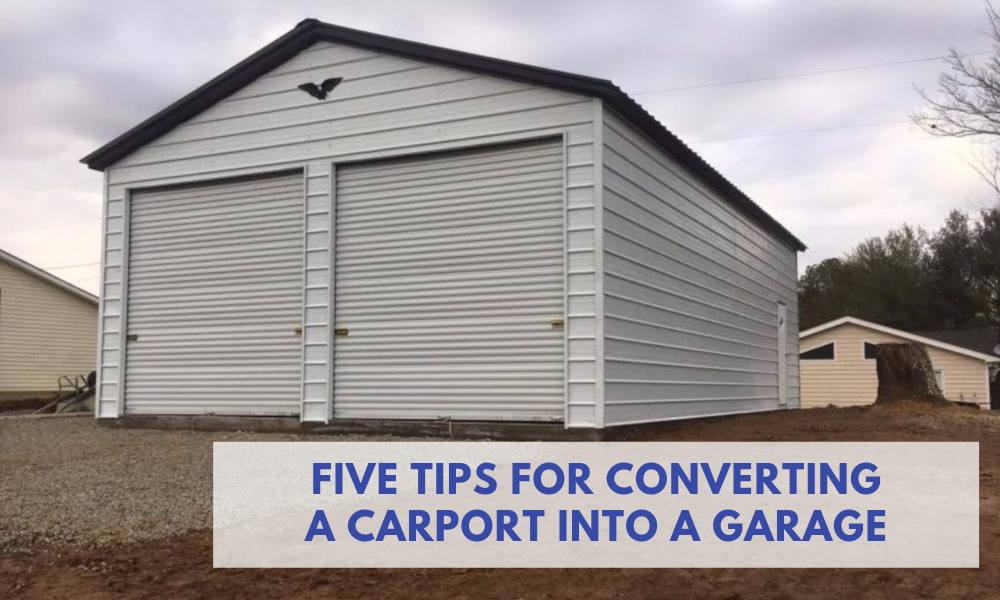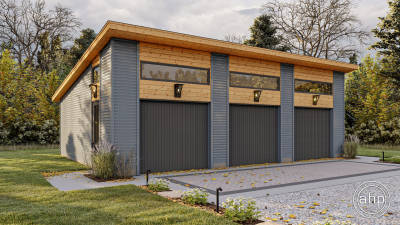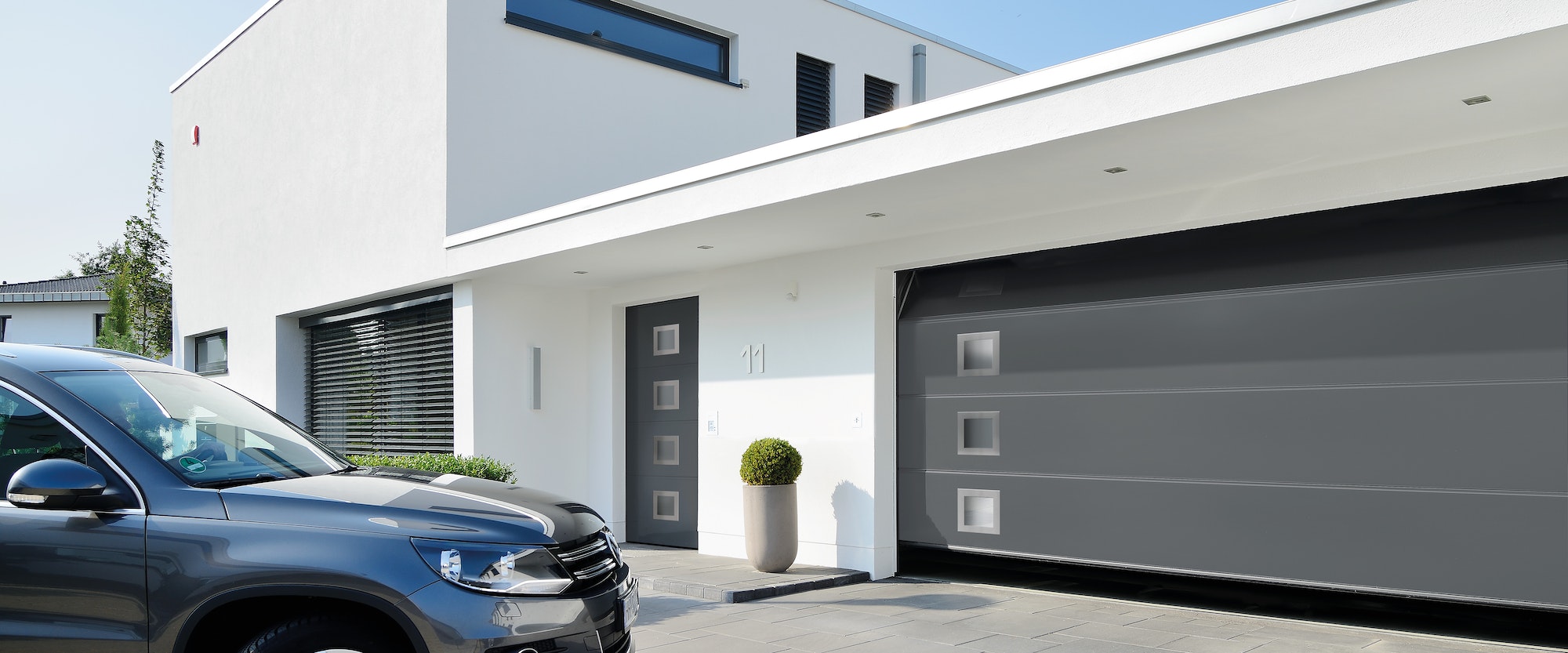
Two-story garage plans are increasingly popular because home builders realize that large garages can be used to store and protect cars, as well as add value to the house. These plans are great for anyone who needs a garage to store their cars or a space for work.
It is important to take into account the terrain and materials you are using when choosing the right layout for your property. Your garage should complement the style and proportions. A garage that is too small or too large can affect the curb appeal and value of your house.
One-story House with Two-story Garage
A house with a two-story garage is ideal for families that want to maximize their living space. These homes have multiple floors to provide privacy and family separation. The garage at the bottom can be used for a studio or workshop (think art, music, or hobby rooms).

Modern 2 story garage
If you're building a modern house with modern architecture, choose from our selection of contemporary two-story garage plans. You have many options. These garage plans are available in single (or two-car) or double (2 or 3 car) versions. These garages are ideal for those who need additional storage or workshop space.
Some plans also offer a finished second floor apartment for guests and in-laws. These separate living areas can be used for additional bedrooms or rentals.
Plans for Drive-Under Houses
A drive-under plan is a home plan that allows homeowners to place a garage beneath the first floor plan of their house if they have a steep or mountainous lot. Typically, this type of plan is used for vacation homes situated in the mountains or coastal areas.
Modern Two-Story Garage
This modern garage plan (plan 23-623, above) features a spacious second-floor apartment that's great for long-term rentals or as an in-law suite. The garage space can hold two cars and the second-floor contains a bedroom with big closets, and an additional bath.

You have the option of building a one-story house and a 2-story garage depending on the size of your lot or a 2-story house and home. This layout can make more space and allows for an open floor plan that provides plenty of space for hobbies and activities.
Stacked homes are a popular design. They can have the master bedroom located on the main or upper levels. When building a stack home, it is important to ensure that your floor plan allows for easy access on both levels.
In-Law Suites and Teen Rooms
You might consider adding in-law and teen rooms to your house if you have an expanding family. These rooms can be a great addition to your home and offer extra space for your family. This room is especially useful for children with special needs or disabilities.
FAQ
What is the difference in a remodel and a renovaton?
Remodeling is any major transformation of a room or portion of a bedroom. A renovation refers to minor changes made to a particular room or area of a given room. A bathroom remodel, for example, is a major undertaking, while a new sink faucet is minor.
Remodeling entails the replacement of an entire room, or a portion thereof. A renovation is merely changing something in a particular room. A kitchen remodel could include replacing countertops, sinks and appliances as well as changing lighting and paint colors. However, a kitchen renovation could include changing the color of the wall or installing a light fixture.
Are you able to spend $30000 on a kitchen renovation?
A kitchen renovation can cost anywhere between $15000 - $35000 depending on how much you want to spend. For a complete renovation of your kitchen, you can expect to pay over $20,000. However, if you want to update appliances, replace countertops, or add lighting and paint, you could do it for under $3000.
The average price for a full-scale renovation is usually between $12,000-$25,000. But there are ways to save money without compromising quality. For example, you can install a new sink instead of replacing an old one, which costs approximately $1000. Or you can buy used appliances for half the price of new ones.
Kitchen renovations can take longer than other types projects so plan ahead. You don't want to start working in your kitchen only to realize halfway through that you're going to run out of time before completing the job.
You are best to get started as soon as possible. Start by looking at different options and getting quotes from contractors. Then narrow down your choices based on price, quality, and availability.
Once you've found a few potential contractors, ask for estimates and compare prices. It's not always the best option to go with the lowest price. It's important that you find someone with similar work experiences who can provide a detailed estimate.
Make sure you include all extras in your final cost calculation. These extras could include labor and material costs, permits, or other fees. Be realistic about the amount you can afford, and stick to your budget.
You can be open about your dissatisfaction with any of these bids. Tell the contractor why you don't like the initial quote and offer another chance. Don't let your pride prevent you from saving money.
How can you tell if your house needs renovations or a remodel?
You should first check to see if your home has had any recent updates. It may be time for a renovation if your home hasn't been updated in a while. If your home appears brand-new, you might consider a renovation.
A second thing to check is the condition of your house. You should inspect your home for holes, peeling wallpaper, and broken tiles. However, if your home looks great, then maybe it's time to consider a remodel.
A second factor to consider is your home's general condition. Are the structural integrity and aesthetics of your home? Are the rooms well-lit? Are the floors spotless? These are essential questions to consider when choosing the type of remodeling you want.
What is the difference between building a new home and gutting a current one?
A home gutting involves the removal of all interior items, including walls, floors ceilings, plumbing and electrical wiring, fixtures, appliances, and fixtures. It is often done when you are moving to a new location and wish to make some improvements before you move in. Gutting a home is typically very expensive because so many things are involved in doing this work. The average cost to gut home ranges from $10,000 to $20,000, depending on your job.
A builder builds a home by building a house frame-by-frame, then adds doors, windows, doors and cabinets to the walls. This is done usually after purchasing lots. It is usually cheaper than gutting a house and will cost around $15,000 to $30,000.
It comes down to your needs and what you are looking to do with the space. If you want to gut a home, you'll probably need to spend more because you'll be starting over. If you're building your home, however, you don't have to tear everything down and start over. Instead of waiting for someone else, you can build it how you want.
What are the top expenses associated with remodeling a Kitchen?
A few key costs should be considered when planning a kitchen remodeling project. These include demolition, design fees, permits, materials, contractors, etc. Although these costs may seem relatively small, if you take them all together, they can quickly add up. However, when you combine them all, they quickly add-up to become very large.
Demolition is the most costly cost. This includes removing cabinets, countertops and flooring. Then you have to remove the drywall and insulation. You will then need to replace them with new items.
The next step is to hire an architect to design the space. To ensure that the project meets all building codes, permits must be obtained. After that, you have to find someone to do the actual construction.
The contractor must be paid once the job has been completed. The job size will determine how much you spend. It is crucial to get estimates from several contractors before you hire one.
Plan ahead to cut down on some of these costs. You may be eligible to get better prices on materials, or you might even be able skip some of your work. If you know what needs to be done, you should be able to save time and money during the process.
Many people install their cabinets by themselves. People believe that this will save them money since they won't have to hire professionals for installation. The problem is that they usually spend more money trying to figure out how to put the cabinets in place themselves. The time it takes to complete a job can be completed by professionals in half the time.
Unfinished materials can also be a way to save money. You must wait until the cabinets are fully assembled before purchasing pre-finished material. You can immediately use unfinished materials if you purchase them. You can always make a change if things don't go as you planned.
Sometimes, though, it doesn't make sense to go through all of this. Planning is the best way save money on home improvement projects.
What order should you renovate your house?
First, the roof. Second, the plumbing. The third is the electrical wiring. Fourth, walls. Fifth, the floor. Sixth, are the windows. Seventh, the doors. Eighth, it's the kitchen. Ninth, the bathrooms. Tenth, the garage.
Once you've completed these steps, you can finally get to the attic.
Hire someone to help you if you don't have the skills necessary to renovate your home. You will need patience, time, and effort when renovating your own home. It can also be expensive. If you don't have the time or money to do all the work, why not hire someone else?
While renovations can be costly, they can help you save a lot of money over the long-term. Beautiful homes make life more enjoyable.
Statistics
- 55%Universal average cost: $38,813Additional home value: $22,475Return on investment: 58%Mid-range average cost: $24,424Additional home value: $14,671Return on investment: (rocketmortgage.com)
- 57%Low-end average cost: $26,214Additional home value: $18,927Return on investment: (rocketmortgage.com)
- About 33 percent of people report renovating their primary bedroom to increase livability and overall function. (rocketmortgage.com)
- bathroom5%Siding3 – 5%Windows3 – 4%Patio or backyard2 – (rocketmortgage.com)
- $320,976Additional home value: $152,996Return on investment: 48%Mid-range average cost: $156,741Additional home value: $85,672Return on investment: (rocketmortgage.com)
External Links
How To
How to Remove Tile Grout on Floor Tiles
Most people don't know that tile grouting exists. It is used to seal the joints between the tiles. There are many types available today. Each is used for a specific purpose. We'll show you how we can remove grout from floor tiles.
-
Before you start this process, make sure that you have all the necessary tools. A grout cutter, grout scraper and some rags are all essential.
-
Now you must clean any dirt or debris under the tile. The grout cutter can be used to cut the grout and remove any loose tiles. Take care not to damage the tiles.
-
Once you have cleaned everything up, take the grout scraper and use it to clean off any remaining grout. You can move on to step 4 if there is no grout left.
-
Now you can get on with the next step. Make sure to take one of the rags out and soak it in water. The rag should be completely dampened. Make sure the rag is completely dry after it has gotten wet.
-
Place the wet cloth on the joint where the tile meets with the wall. Press firmly on the rag until the grout begins to break apart. Slowly pull the rag toward you, and keep pulling back and forth until all of the grout is gone.
-
Repeat steps 4 and 5 until all the grout has been removed. Rinse the ragout. Repeat the process if necessary.
-
Once you have finished removing all the grout, wipe down the surface of the tiles with a damp cloth. Let dry thoroughly.